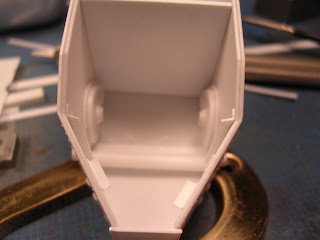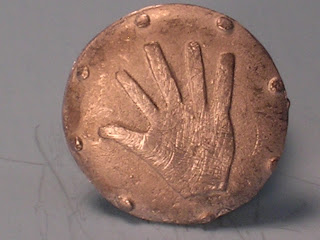Been pretty busy since my last post. We moved
from the suburbs to the City, drove down to Austin, Texas for a week’s vacation
and started new jobs. Living in
Chicago is great, so much to see and do. I also like the fact that I can walk
to the grocery store, liquor store, library and restaurant. Did I mention there
is also a small brewery about four blocks away? Just too good to be true!
Once I got into a painting groove, each creature
only took me a night or two to complete. I then used JB Weld two-part epoxy to attach
them to a small section of finished oak and went to town on the groundwork. I
think they turned out pretty good.
I also tackled a Scotia Grendel "Lesser
Goblin Horde". I bought this around the same time that I bought the three
Dungeon Creatures and its nothing but a big-chunk-of-resin. Like the creatures,
it had a few false starts followed by a numerous baths in oven cleaner. Anyhow,
I finally decided to give it a go.
To be honest, it was a pain-in-the-ass to paint.
The shields weren't too bad (just a freakin' ton of them!), but the goblins drove me crazy. They're everywhere and
some are sculpted well and others are half-assed. At first, I was going to
paint them green, just like everyone else does. This is the Games Workshop
influence on goblin painting. I got real geeky and Googled "goblins"
and was rewarded (odd term, but it works) with images from GW and "Lord of
the Rings" (LOTR). The LOTR goblins looked just right: disgustingly
putrid.
The GW goblins look clownish, I wanted something that would reflect the
goblins true nature—sneaky, cowardly and prone to bouts of excessive theft.
Now, it’s impossible to portray these attributes with paint, but the flesh-like
colors I used did a better job than green (or something like that). The kit came with a couple of spears
and swords that were intended to be sticking out of the mass. Of course I
misplaced them, so I had to come up with something to fill the holes. One is a
banner made from plastic rod, wire and lead foil and the other is just a piece of
plastic rod fashioned to resemble a sharp stick. I’m not 100% happy with the
way the paint job on the banner came out — I may go back and redo it.
I put it on a base, used tile grout/adhesive for
the groundwork, covered that with fine sand, added sections of dilapidated
fence plus some dried plants and it was done. Now on to other things...
RJH
10.2.13


























































